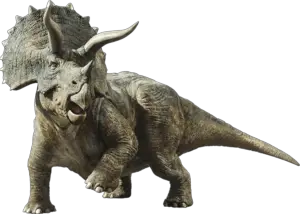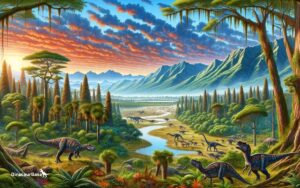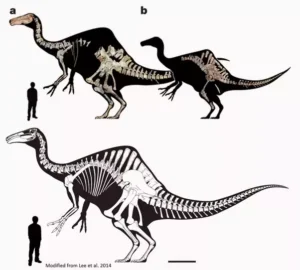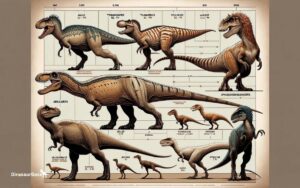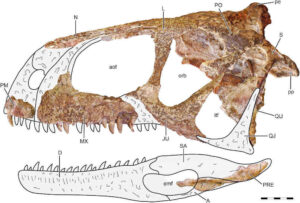Top 5 Facts: Abelisaurus Size And Weight Revealed
Abelisaurus dinosaurs typically reached lengths of about 7-9 meters and weighed up to 3 tons. They were substantial predators during the Late Cretaceous period.
Unraveling the mysteries of our planet’s prehistoric past, the Abelisaurus stands out as a remarkable dinosaur that roamed South America around 70 million years ago.
This carnivorous theropod left a unique footprint in the world of paleontology, thanks to its significant size and distinctive features.
Known from fragmentary remains, Abelisaurus has sparked interest and debate among scientists aiming to reconstruct its life and habits.
With only a skull to paint its history, this ferocious predator’s exact dimensions and characteristics have been pieced together through comparisons with better-known relatives.
Join us as we delve into the world of Abelisaurus, where each fossil discovery brings us closer to understanding these ancient creatures.

Unveiling The Abelisaurus
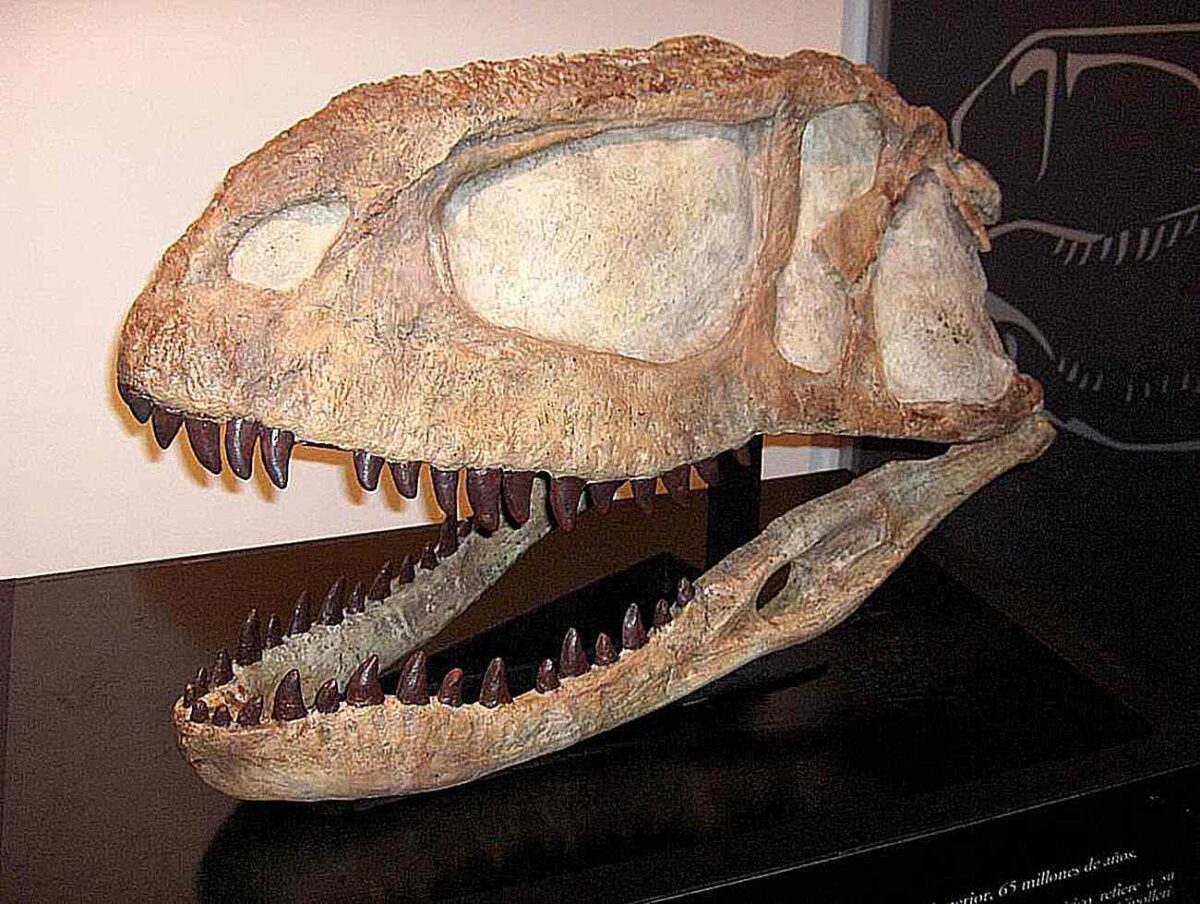
Welcome to a thrilling journey back in time as we uncover the mysteries of the Abelisaurus. This fierce predator roamed the lands during the Late Cretaceous period.
Recent studies have pieced together fascinating insights into its size and weight. Let’s delve into the realm of dinosaurs and reveal the true nature of the Abelisaurus.
From Fossil Fragments To A Formidable Predator
Abelisaurus, a dinosaur known from only a single skull fragment, has intrigued scientists for years. Despite limited evidence, researchers have reconstructed its formidable size.
They estimate that Abelisaurus stood at about 25 feet long and could weigh up to 3 tons. This predator likely dominated its environment with powerful jaws and acute senses.
| Feature | Abelisaurus |
|---|---|
| Length | 25 feet |
| Weight | 3 tons |
| Period | Late Cretaceous |
| Habitat | South America |
Comparing Dimensions: Abelisaurus Vs. Contemporaries
When it comes to size, the Abelisaurus was a giant among its peers. Its length eclipsed that of the similarly timed Carnotaurus, which measured around 20 feet long. These impressive dimensions placed the Abelisaurus among the larger predators of its era, out-sizing many of its contemporaries.
- Carnotaurus: 20 feet long
- Majungasaurus: 20-23 feet long
- Abelisaurus: 25 feet long
The magnitude of Abelisaurus captivates enthusiasts and researchers alike. As scientists continue to study this spectacular creature, each discovery adds to our understanding of their might within the ancient ecosystems.
Size Estimates: Piecing Together The Puzzle
Discovering the true magnitude of long-extinct creatures poses significant challenges. Without complete fossils, scientists must be creative.
They piece together scarce evidence to estimate size. The Abelisaurus, a late Cretaceous predator, sparks curiosity with just a single skull revealing its secrets.
Extrapolating From Skull To Body Size
Scientists have only one skull to guess the size of Abelisaurus. They compare it to close relatives. This method is tricky but helpful. Imagine using a human skull to figure out their height. It’s like that, but with more math and less room for error.
- Skull length: 85 centimeters
- Body length estimates range from 7 to 9 meters
- Total weight predictions vary from 1.5 to 2 tons
Analyses That Shaped Our Understanding
Research on Abelisaurus expanded over years. Various methods helped provide size clues.
| Analysis Type | Details |
|---|---|
| Comparative Analysis | Examines close dinosaur relatives for size estimation. |
| Computer Modeling | Uses digital reconstructions to predict body structure. |
| Scaling Laws | Applies principles of physics to estimate mass and volume. |
Each analysis method fills a piece of the puzzle. They work together to form a clearer image. The process mirrors detective work, sifting through clues to solve a prehistoric mystery.
Heft And Mass: Gauge Of A Giant
The Abelisaurus, a fearsome predator from the Late Cretaceous period, has long intrigued scientists and dinosaur enthusiasts alike.
Unearthing the true size and weight of this colossal creature poses a fascinating challenge. Its size tells a tale of its dominance and strategy as a top predator of its time.
The Challenge Of Estimating Dinosaur Weight
Paleontology relies on scattered, fossilized remains to reconstruct extinct animals. The Abelisaurus is no exception.
Scientists have limited evidence to work with. This makes calculating its weight challenging.
They must make educated assumptions based on bone density, body composition, and comparison with better-known relatives.
Methods And Models Used For Mass Calculation
Experts use various techniques to estimate the mass of dinosaurs like the Abelisaurus. One popular method employs mathematical models.
These models consider the creature’s total volume and density. The data come from modern-day relatives, such as birds and reptiles. Another approach involves reconstructing the dinosaur’s musculature.
This uses its skeletal framework as a guide. Scaling techniques compare the Abelisaurus to close relatives with similar body structures.
Key Techniques at a Glance:
- Comparative Scaling: Uses proportions of related species.
- 3D Modeling: Virtually reconstructs body volume.
- Extrapolation: Applies known data points to estimate unknowns.
Scientists even employ advanced technologies, such as computer algorithms and 3D scanning, to refine these estimates
Estimates in Numbers:
| Study | Estimated Weight |
|---|---|
| 3D Modeling Estimate | 1,000 kg |
| Scaling based on close relatives | 1,500 kg |
As research continues, the precise heft and mass of the Abelisaurus will become clearer, helping us to better understand the life of this ancient giant.
Evolving Perspectives On Abelisaurid Proportions
Dinosaurs fascinate all ages. Their size and power have always amazed us.
Among these giants, Abelisaurus remains a mystery. This predator once roamed South America.
Researchers have worked hard to uncover facts about its size and weight. Our knowledge has grown over time.
Early Misconceptions Corrected By New Discoveries
Early sketches of Abelisaurus show it as a massive beast. The first bones led scientists astray. They thought Abelisaurus was as giant as Tyrannosaurus.
But new findings paint a different picture. We now know it was smaller. Smaller, yet still powerful.
Impact Of Improved Technology On Size Assessments
Technology has changed the game. Computers and 3D modeling help us. We can now recreate Abelisaurus digitally.
This lets us see its true size. With technology, we learn more. Its weight, not as much as once thought, becomes clear.
| Year | Estimated Length (meters) | Estimated Weight (tons) |
|---|---|---|
| 1980s | >12 | Unknown |
| 2000s | 9-11 | <4 |
| Present | 7-9 | 1-2 |
The Abelisaurus tale is just starting. New fossils may change what we think again. Stay tuned as this creature’s story evolves, just like our technology does.
What is the average size and weight of an Abelisaurus compared to other theropod dinosaurs?
The average size and weight of an Abelisaurus compared to other theropod dinosaurs varies. However, based on fossil evidence, it is believed that Abelisaurus was smaller and lighter than some of its larger theropod counterparts. This suggests a significant difference in the abelisaurus theropod comparisons.
Comparative Analysis: Abelisaurus In The Ecosystem
The Abelisaurus, a fearsome predator from the late Cretaceous period, held a colossal presence within its ecosystem.
This section unveils the role of the Abelisaurus, bringing to light its interactions and the strategies that cemented its place in prehistoric times.
Prey And Predators: An Ecological Snapshot
The Abelisaurus stood at the top of the food chain. Its size and strength made it a dominant hunter.
The dinosaur’s diet consisted mainly of:
- Smaller Dinosaurs: Easy targets due to their size.
- Herbivores: Provided a substantial meal for this carnivore.
Despite being a top predator, the Abelisaurus faced threats from:
- Competing carnivores rivaling for food and territory.
- Illness and injuries impacting its hunting abilities.
Role And Adaptations Within Its Habitat
The Abelisaurus adapted to its environment to become an apex predator. Notable adaptations included:
| Adaptation | Benefit |
|---|---|
| Strong Legs | Fast running speeds to catch prey. |
| Powerful Jaws | Efficient killing of its targets. |
The Abelisaurus influenced the survival and behavior of other species, maintaining the ecological balance.

Credit: en.wikipedia.org
Conclusion
Exploring the dimensions of Abelisaurus has unveiled fascinating insights. These top five facts offer a clearer image of this ancient predator’s stature.
Enthusiasts and paleontology aficionados alike now have a solid grasp on how imposing these creatures once were. Thanks for journeying back in time with us to uncover the true scale of Abelisaurus.
Keep following for more exciting prehistoric revelations!

